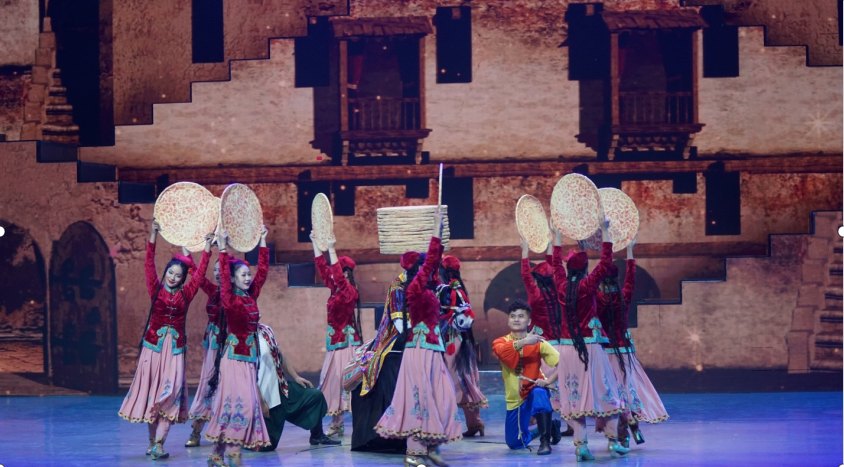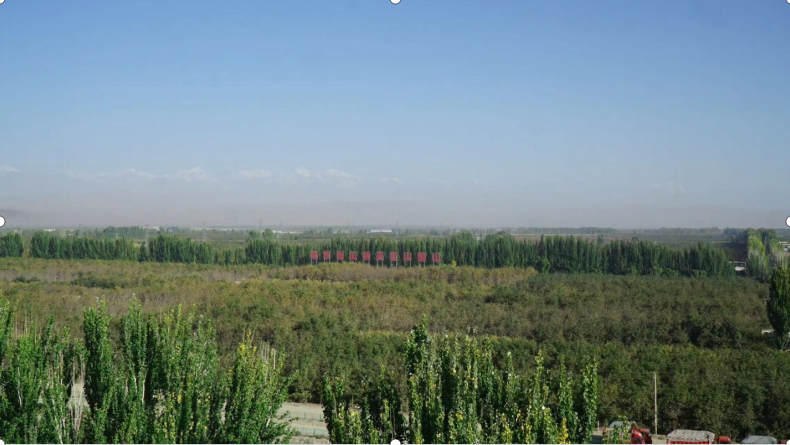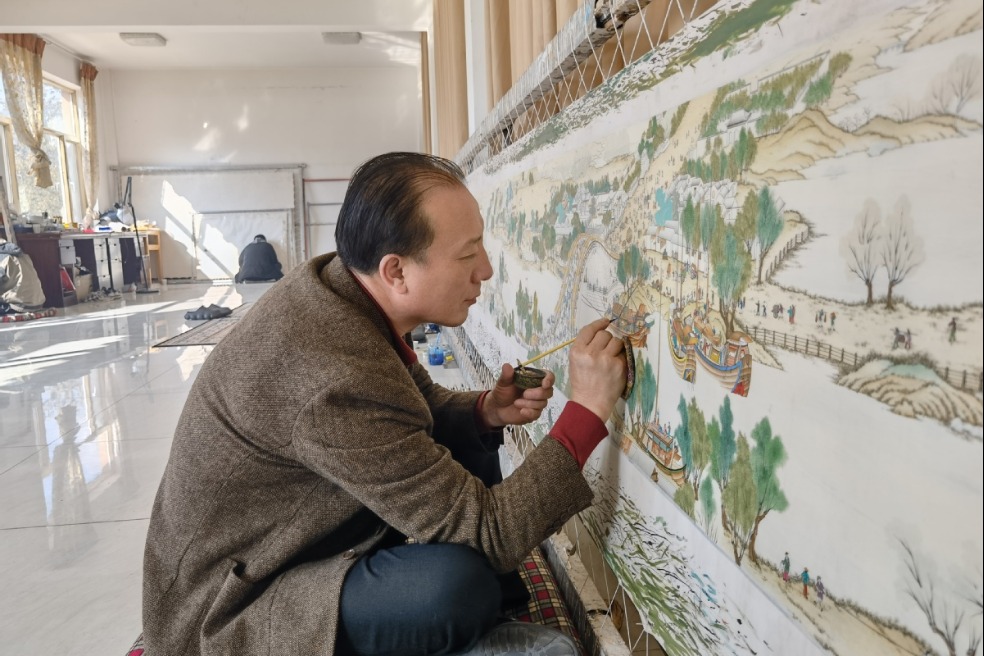Beyond the table: Xinjiang and its food


People can argue all they want about whose cuisine tastes the best, uses the most indigenous ingredients, or has the most passionate devotees; but how many cultures can say they dance with their food? (The table gets quiet.)
Foreign tourists visiting Xinjiang as part of the A Date with China international media tour were treated to many live performances including a dance involving naan bread. Dancers in traditional Uygur outfits held up props resembling the circular bread while orbiting a man dressed as both the donkey and its rider. As part of the performance, dancers left the stage to treat members of the audience to this specialty served on plates. While there is certainly a playfulness to it, the dance celebrates the historical role of naan as life for not only the locals but all those journeying across the Silk Road.
Another frequenter of Xinjiang tables is polo — the region's oily take on pilaf. The ceramic spoon at the place setting comes to use for something too evasive for chopsticks; the oil's role in the mouthfeel acts as a host for the incoming sweet raisins, tart dried apricot, and earthy mutton. The punishments of such a guilty pleasure are no secret, and an accompanying bowl of yogurt is believed to pardon one's stomach and complexion from the effects of oil. Food's internal value is universal, but in Xinjiang, the relationship with this glossy delight has a topical element as well. Rahila, a local Uygur resident, reminisces about her mother telling her NOT to use a spoon when eating polo and instead grab it with her bare hands. The age-old practice of eating rice with one's hand is still common in parts of Xinjiang, and some see the warmth and oils of polo as therapeutic for the skin. Going one step further, the remaining oil in the pan used to cook the dish – full of nutrients leeched from the fruits, vegetables, and other ingredients – gets rubbed right onto the ends of hair.
Where Xinjiang's relationship with its food is most inspiring is seen in the reforestation efforts of Aksu. Sandstorms have crippled cities for as long as people have dared to live in deserts, but in the early 1990s, efforts "took root" to bring life to an otherwise desolate area. A grid of tall trees forms a windbreak, and within lies rows and rows of apple trees. Just look out at the sand beyond the expansive green to see how massive the change has been. The area's disadvantage of needing water is quenched through aquifers, dams, and treated urban water, so it is free to enjoy the benefits of having so few pests and plant diseases. The result: some of the sweetest, juiciest, not to mention, biggest apples you have ever had the pleasure of taking a bite out of. While the members of the A Date with China tour got to pick straight from the source, the demand for Aksu apples shows that people across the country feel as if they are in the orchard themselves.


































